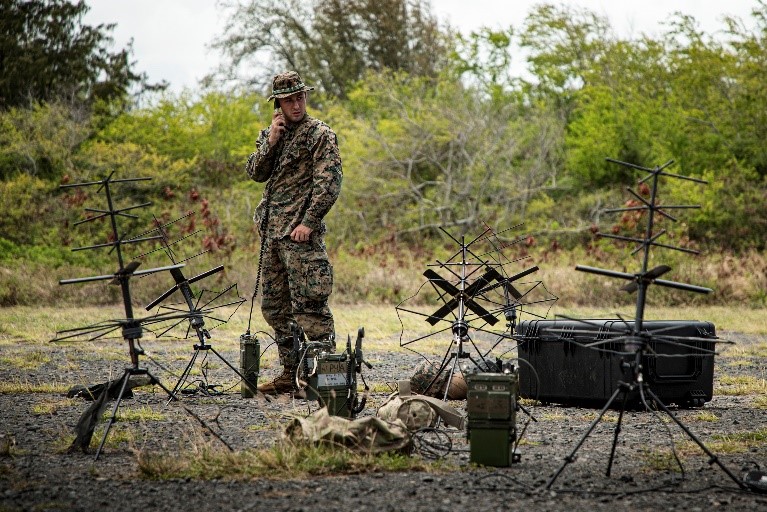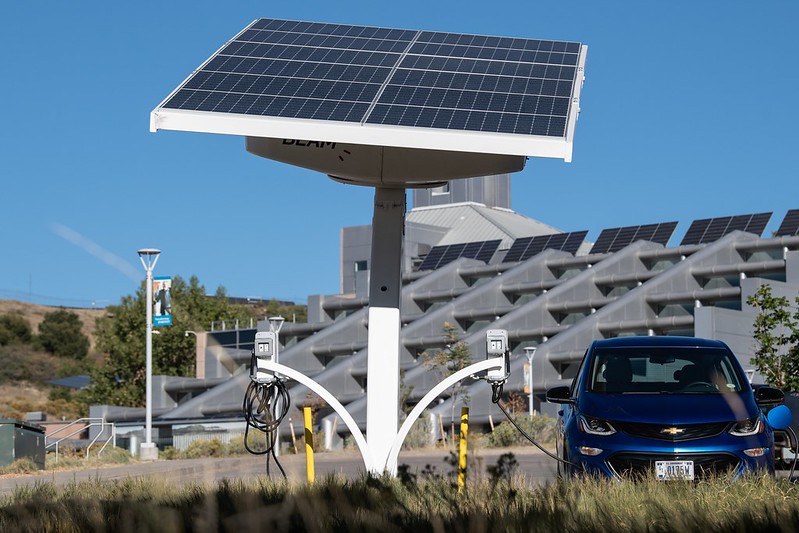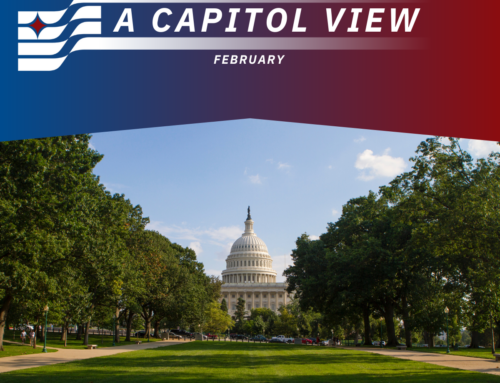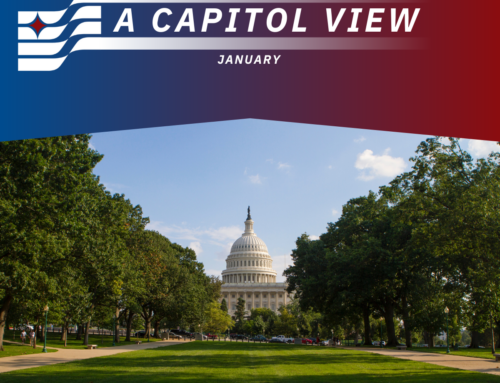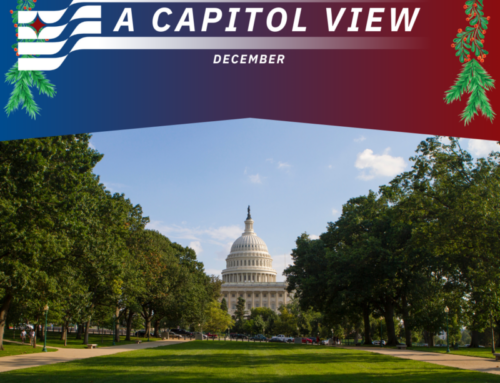What’s Going on in Congress?
Authorizations
Earlier this month, the initial version of the National Defense Authorization Act (NDAA) was amended significantly during markup and a total of 650 amendments were added to the final report, out of 1,230 proposed and reported to the House Rules Committee on July 7 to allow the committee to determine the rules of engagement. After a weeklong debate, the chamber voted in favor of the bill by a margin of 329-101 in preparation for conference.
On July 18, the Senate Armed Services Committee (SASC) Chairman Sen. Jack Reed (RI) and Ranking Member Sen. Jim Inhofe (OK) introduced the FY23 James M. Inhofe National Defense Authorization Act (NDAA) to the Senate chamber. It is notable that 433 amendments were considered during the markup process, but that only 233 were included in the introduced bill, most of which were on a bipartisan basis. Currently, the bill has been placed on the legislative calendar to be considered soon.
Senate Appropriations Committee Unveils FY23 Appropriations Bills
Thursday, July 28 the Senate Appropriations Subcommittee (SAC) released all 12 of their FY23 appropriation bills. Notably, the defense funding report included $792.5 billion, which is a $30.8 billion increase from the HACD report. Below are all 12 of the released appropriations bills and how they compare to last year’s enacted levels.
Agriculture
Senate recommendation: $27.1 billion | $2.3 billion above FY22
Commerce, Justice, Science, and Related Agencies
Senate recommendation: $85.8 billion | $10.1 billion above FY22
Defense
Senate recommendation: $792.1 billion | $63.6 billion above FY22
Energy and Water Development
Senate recommendation: $57.5 billion | $4.6 billion above FY22
Financial Services and General Government
Senate recommendation: $29.5 billion | $3.4 billion above FY22
Senate recommendation: $59.9 billion | $2.4 billion above FY22
Interior, Environment, and Related Agencies
Senate recommendation: $42.2 billion | $4.2 billion above FY22
Labor, Health and Human Services, Education, and Related Agencies
Senate recommendation: $216.1 billion | $21 billion above FY22
Senate recommendation: $4.7 billion | $780.3 million above FY22
Military Construction, Veterans Affairs, and Related Agencies
Senate recommendation: $316.9 billion | $24.5 billion above FY22
State, Foreign Operations, and Related Programs
Senate recommendation: $64.5 billion | 6.5 billion above FY22
Transportation, Housing and Urban Development, and Related Agencies
Senate recommendation: $89 billion | $8 billion above FY22
House Chamber Advances Six of Twelve Annual Appropriations Bills
On July 20, the House of Representatives voted to pass H.R. 8294, the legislative vehicle for six of the twelve FY23 federal funding bills. The $405 billion package of bills passed on a 220-207 vote. All six bills touted toplines that increased from funding levels in FY22. Below are all twelve of the released appropriations bills and how they compare to last year’s enacted levels.
House Recommendation: $27.2 billion | $2.08 billion above FY22
Commerce, Justice, Science, and Related Agencies
House Recommendation: $85.7 billion | $7.6 billion above FY22
House Recommendation: $761.7 billion | $33.2 billion above FY22
House Recommendation: $56.28 billion | $3.4 billion above FY22
Financial Services and General Government
House Recommendation: $29.8 billion | $4.3 billion above FY22
House Recommendation: $85.67 billion | $2.7 billion above FY22
Interior, Environment and Related Agencies
House Recommendation: $44.8 billion | $6.8 billion above FY22
Labor, Health and Human Services, Education, and Related Agencies
House Recommendation: $242.1 billion | $28.5 billion above FY22
House Recommendation: $5.7 billion | $954.4 million above FY22
Military Construction, Veterans Affairs and Related Agencies
House Recommendation: $314.1 billion | $29.5 billion above FY22
State, Foreign Operations, and Related Programs
House Recommendation: $64.57 billion | $8.48 billion above FY22
Transportation, Housing and Urban Development, and Related Agencies
House Recommendation: $90.9 billion | $9.9 billion above FY22
The chamber voted down a package of thirteen Republican amendments that would have made significant cuts to several funding toplines. Five en bloc amendments were agreed to by voice vote and included in the final version of the package. The bill also included 98% of community project funding requests submitted by members on both sides of the aisle. The remaining six appropriations bills for FY23 have been approved by the House Appropriations Committee and will move to the House floor for votes before receiving the President’s signature.
CHIPs and Science Act
On July 27, 2022, the Senate voted to advance their amended version of H.R. 4346, titled the Supreme Court Security Funding Act of 2022, which includes the CHIPs and Science Act, is a bipartisan bill with provisions from both the Senate’s United States Innovation and Competition Act (USICA) first introduced by Majority Leader Sen. Chuck Schumer (NY), and the House’s America COMPETES Act, both meant to spur domestic semiconductor manufacturing. Key investments in the bill include $52 billion in funding for semiconductor manufacturing subsidies and an $81 billion authorization for National Science Foundation research and workforce development activities.
Only a day later on July 28, 2022, the House moved on H.R. 4346 and passed it by a margin of 243-187 without making any changes to the bill, allowing for it to make its way to the President’s desk to be signed.
Inflation Reduction Act of 2022
Wednesday, July 27, Senate Democrats released the text for the Inflation Reduction Act of 2022, a modified reconciliation package, that Democrats have been working on for well over a year.
Earlier in July, it appeared the Senate was on track to pass a bill that focused on Affordable Care Act amendments, a prescription drug pricing fix, and climate and clean energy tax provisions, among others. However, that work was upended when Sen. Joe Manchin (WV) announced that he would not support a vote at that time on the bill with the clean energy tax package included, citing concerns over high inflation. However, after further negotiations with Majority Leader Chuck Schumer (NY), he announced on Wednesday his support for the Inflation Reduction Act of 2022.
The Inflation Reduction Act is set to be an historic down payment on deficit reduction to fight inflation, as well as a major investment in domestic production and manufacturing, an extension of the Affordable Care Act, and an expansion on climate change initiatives.
A high-level summary of the package includes the following provisions:
- Substantial production tax credits for batteries, battery materials, and vehicle purchases
- A 15% corporate minimum tax
- Incentives for clean energy production
- IRS enforcement
- Prescription drug pricing reform
- Investments in hydrogen, nuclear, renewables, fossil fuels and energy storage
- Investments in technologies to reduce methane and reduce carbon emission
- Closing carried interest loophole
The final deadline for Congress to pass the Inflation Reduction Act is the end of September, when the current fiscal year ends. However, Leader Schumer has indicated that he hopes to hold a Senate vote on the legislation next week. If so, there is the possibility that Speaker Pelosi (CA- 12) will reconvene the House mid-August to hold a final vote. Otherwise, the House could vote on it when they return to DC after the Labor Day holiday. One outstanding question regarding possible Senate approval is whether Sen. Kyrsten Sinema (AZ) is on board as she has not yet announced her support for the new bill.
Stay tuned as the situation is fluid and changes daily.
28th Iteration of RIMPAC Commences
On June 29, the U.S. Navy launched the 28th biennial Rim of the Pacific (RIMPAC), considered to be the largest maritime warfare exercise in the world. The event is led by the U.S. Navy’s Indo-Pacific Command (INDOPACOM), and seeks to improve interoperability between Pacific Rim armed forces. From June 29 to August 4, 25,000 personnel members from 26 nations will conduct training in and around the Hawaiian Islands and Southern California. Notably active participants include Australia, Japan, the Philippines and South Korea. As directed in the FY22 National Defense Authorization Act (NDAA), Taiwan was invited to participate for the very first time due to increased threats of Chinese aggression. Under this year’s theme,
Capable, Adaptive Partners, RIMPAC exercises will focus on demonstrating the inherent flexibility of maritime forces through a variety of defense weapons platforms; space, cyber, and unmanned vehicle capabilities are some of the critical emerging technologies set to be demonstrated.
The U.S. Navy and Marine Corps have plans to fully demonstrate the capabilities of their autonomous technologies during the two-week exercise. During the first week of RIMPAC, the U.S. and Australian navies deployed U.S. operated unmanned underwater vehicles (UUVs) designed for underwater minefield exploration from amphibious ship USS Portland. The Marine Corps also has plans to demonstrate its Littoral Explosive Ordnance Neutralization (LEON) system, a family of technologies designed to allow for safe maneuver within littoral regions. The first increment of demonstrations will see the operation of the Explosive Ordnance Disposal Remotely Operated Vehicle (EOD ROV). The successful operation of LEON system technologies aligns with the Marine Corps’ recent update of its Force Design effort that identified reconnaissance, counter-reconnaissance and organic sensing capability as key focus areas for the service.
First Set of Projects to Receive DoD APFIT Funding Announced
The first set of projects to receive funding under the Accelerate the Procurement and Fielding of Innovative Technologies (APFIT) pilot program were announced this month. The program is led by the Office of the Under Secretary of Defense for Research and Engineering (OUSD(R&E)), and its purpose is to expedite the transition of technologies from pilot programs, prototype projects, and research projects into production. Within the APFIT program, priority will be given to small businesses and/or nontraditional defense contractors, specifically those who have received less than $500 million in cumulative revenue from the DoD. The program was funded at $100 million in FY22, and ten DoD program offices will each receive $10 million and in turn use the funding to procure innovative technologies from small businesses and/or nontraditional defense contractors.
Rep. Calvert (CA-42), the Ranking Republican on the Defense Appropriations Subcommittee, applauded the funding announcement after leading the effort to establish the APFIT program in the FY22 Defense Appropriations bill.
“Today’s funding announcement is an exciting step in overcoming the long-standing challenges with transitioning defense technologies from prototypes to production at scale,” said Rep. Calvert in a press release on the program. “The so-called ‘Valley of Death’ has been an obstacle to getting emerging technology and commercially available resources into the hands of our warfighters on the battlefield. I pushed for the creation of APFIT to overcome this hurdle and ensure we stay ahead of near-peer advances like China in our technological advantage.”
The list of projects funded through APFIT and additional information on the program can be found here.
New Leadership for Department of Energy Supply Chain Efforts
On July 19, 2022, the Department of Energy (DOE) announced new Biden-Harris administration appointees to several key Department offices. Out of the seven new appointments, Zachary Valdez was appointed to the role of Chief of Staff for the Department’s brand-new Office of Manufacturing and Energy Supply Chains (MESC). The office’s establishment was announced in February of 2022 as part of larger departmental reorganizations for the purpose of expedient Infrastructure Investment and Jobs Act (IIJA) funding implementation. Prior to this nomination, Valdez worked to shape Diversity, Equity, and Inclusion, as well as workforce development strategies at the National Institute of Standards and Technology’s (NIST) Office of Advanced Manufacturing and served as a Professional Staff Member for the Senate Energy and Natural Resources Committee.
The MESC reports to the Office of the Under Secretary for Infrastructure, another new position created after the passing of the IIJA. No nominations for this Under Secretary position have been submitted; Kathleen Hogan currently serves as the Principal Deputy Under Secretary for Infrastructure.
The MESC is designed to work in coordination with the Offices of Clean Energy Demonstrations (OCED) and Advanced Manufacturing (AMO) to support the expansion and strengthening of our domestic energy supply chain. David Howell, current Director of the DOE Vehicle Technologies Office (VTO), serves as the Acting Director and Principal Deputy Director of the newly minted office. No nominations for a permanent MESC Office Director have been submitted.



